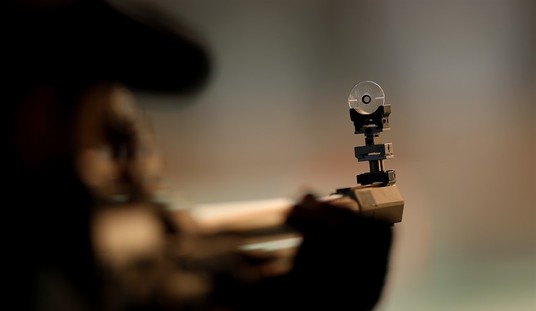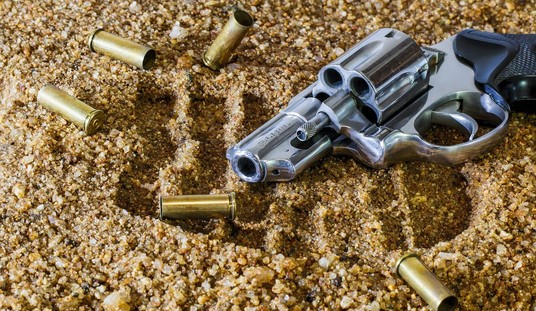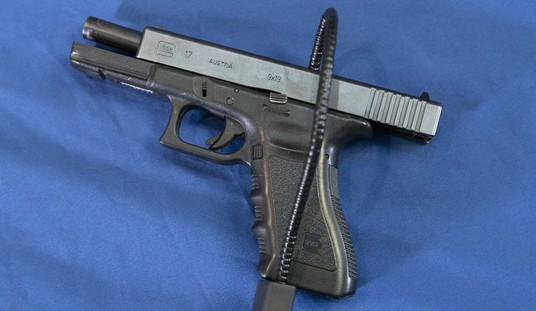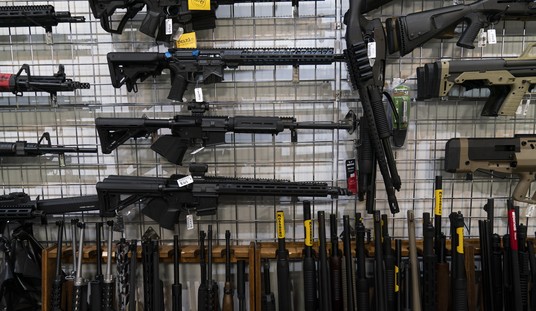New York Times “journalist” Manny Fernandez is attempting to gin up anger against the police in a self-contradictory article that blames law enforcement officers for failing to provide first aid for a criminal suspect in an officer-involved shooting, before later citing an expert that reveals the officers couldn’t have treated his internal injuries.
The article began by blaming officers for failing to provide aid to a suspect shot by an off-duty officer.
For 15 minutes, a man shot by an off-duty officer here lay bleeding from two gunshots in his abdomen as the responding officers stood by without providing first aid. At one point, as the victim, a 53-year-old black man, raised his head, an officer used his foot to keep the man’s face on the pavement, according to a dashboard camera video supplied to The New York Times recently by the man’s relatives.
From the time the episode was first reported, at 2:17 a.m. on July 9, 2014, and including the time the man, Charles K. Goodridge, lay unaided on the ground, it took more than an hour for him to arrive at an emergency room. An hour after his arrival at the hospital in an ambulance, he was dead.
The length of time Mr. Goodridge was left unassisted has angered his relatives and has been criticized by two witnesses to the episode and by law enforcement officials. And like the deaths of Eric Garner on Staten Island, Tamir Rice in Cleveland and Walter L. Scott in North Charleston, S.C., the Goodridge case has raised racially charged questions, not only about what led to the shooting but the actions of the police officers in the aftermath.
“He was shot twice, bleeding, and nobody did anything,” said Mr. Goodridge’s mother, Lucille, 75. “I don’t think that if he was white they would have just left him like that. A dog would have gotten more attention than he did.”
After asserting that the responding officers were callous and racist in their treatment of Goodridge, Fernandez then asserted that if they had done more, Goodridge might have lived.
It is unclear if Mr. Goodridge, a former computer programmer, would have survived if the officers had rendered aid before the paramedics arrived. But experts on police procedure and law enforcement officials who examined the video said the off-duty officer and his colleagues should have done more to assist Mr. Goodridge.
Unfortunately for Hernandez and the Times, it is very clear from his own research that the law enforcement officers on the scene could have done nothing to save Goodridge’s life.
Two deep penetrating wounds to the abdomen go far beyond the first aid abilities of law enforcement officers in the best-trained and equipped departments. Wounds of this type require emergency surgery to treat the internal hemorrhaging caused by pistol bullets designed to penetrate 12″-18″ into the human body. Even the best-trained and equipped officers are only equipped with an IFAK (individual first aid kit) that includes a tourniquet—only be used on limbs to slow arterial bleeding—and hemostatic bandages that may help slow surface bleeding. Neither tourniquets nor hemostatic bandages are remotely capable of stopping internal bleeding.
It was clearly a failure to get Goodridge to an emergency room to get his wounds treated in a timely manner that resulted in his death, not the inability of officers to treat him in the field (our bold below):
A spokesman for the ambulance service, Cypress Creek E.M.S., declined to comment. Its response time of 10 minutes did not exceed the median response time for Harris County, which is 12 minutes. However, the overall delay of more than an hour in getting Mr. Goodridge to the hospital was called excessive by experts. Several factors contributed to the length of time, including a 30-mile trip to Ben Taub Hospital in Houston. In addition, dispatchers in the constable’s office initially contacted an ambulance service that did not serve that area. and then sent Cypress Creek E.M.S. to the wrong address, according to audio recordings of dispatch communications.
The officers appeared to be unaware of the problems getting an ambulance to the scene and put the responsibility of tending to Mr. Goodridge’s injuries on the paramedics, according to the dispatch communications. During the wait for the ambulance, the two officers seen most prominently in the video — Sgt. John M. Walton, who is white, and Deputy Constable Andres Rosas, who is Hispanic — asked dispatchers if paramedics were on their way and urged them to get E.M.S. there. Sergeant Walton, whose patrol car supplied the video, was asked if deputies needed additional assistance, but he told dispatchers that they did not.
“All we need to do is get this guy on an ambulance,” he added in the audio recordings.
Dr. Michael M. Baden, a forensic pathologist and the former chief medical examiner for New York City, reviewed the autopsy report and said that Mr. Goodridge could have survived if he had arrived at the hospital sooner.
“They watched while he was bleeding to death, and that bleeding could have been stopped because it didn’t hit any major organs,” he said. “The fact that they didn’t do any CPR in this instance probably didn’t matter much. The thing that had to be done in this case is stop the internal bleeding, and you can’t do that from the outside. You’ve got to do it in the operating room.”
You can perhaps legitimately claim there was a failure of dispatchers to immediately and correctly route the correct ambulance service to the scene of the shooting. You can perhaps legitimately question whether a hospital 30 minutes away was their best option for treatment (though it appears that it was), and if an air ambulance (if available) might have been a better transport option.
But the premise for the insinuations by the family and Manny Fernandez that law enforcement did do enough collapse in the paragraph bolded above. There was nothing they could have done to save his life.
Goodridge’s internal injuries are what killed him, and no law enforcement officers are trained and equipped to deal with deep penetrating wounds to the abdomen. The law enforcement officers on the scene knew they were not trained or equipped to render the kind of medical care Goodridge needed, which only a fully-equipped trauma center with a skilled surgeon could provide.
The external application of a hemostatic bandage would merely have been theatrics, covering the wound externally, but doing nothing to address the internal damage that killed Goodridge.
If there is an investigation to be had here, it is an investigation into EMS response times and procedures, and whether or not Mr. Goodridge’s actions warranted a lethal force response (an official inquiry concluded that the shooting was justified).
It is disgusting that the New York Times is once again attempting to gun up hatred against law enforcement at a time where police are being targeted for assassination as a result of other stories the media has misreported and manufactured.
In a world where facts matter, Manny Fernandez and his editors at the times would have decided to can this story instead of publishing it when Dr. Baden confirmed that the officers on the scene could have done nothing to save Goodridge’s life.
Unfortunately, anger sells, and both Fernandez and the Times seem quite happy to generate more anger against law enforcement officers nationwide as long as it helps drive traffic and fatten their wallets.








Join the conversation as a VIP Member